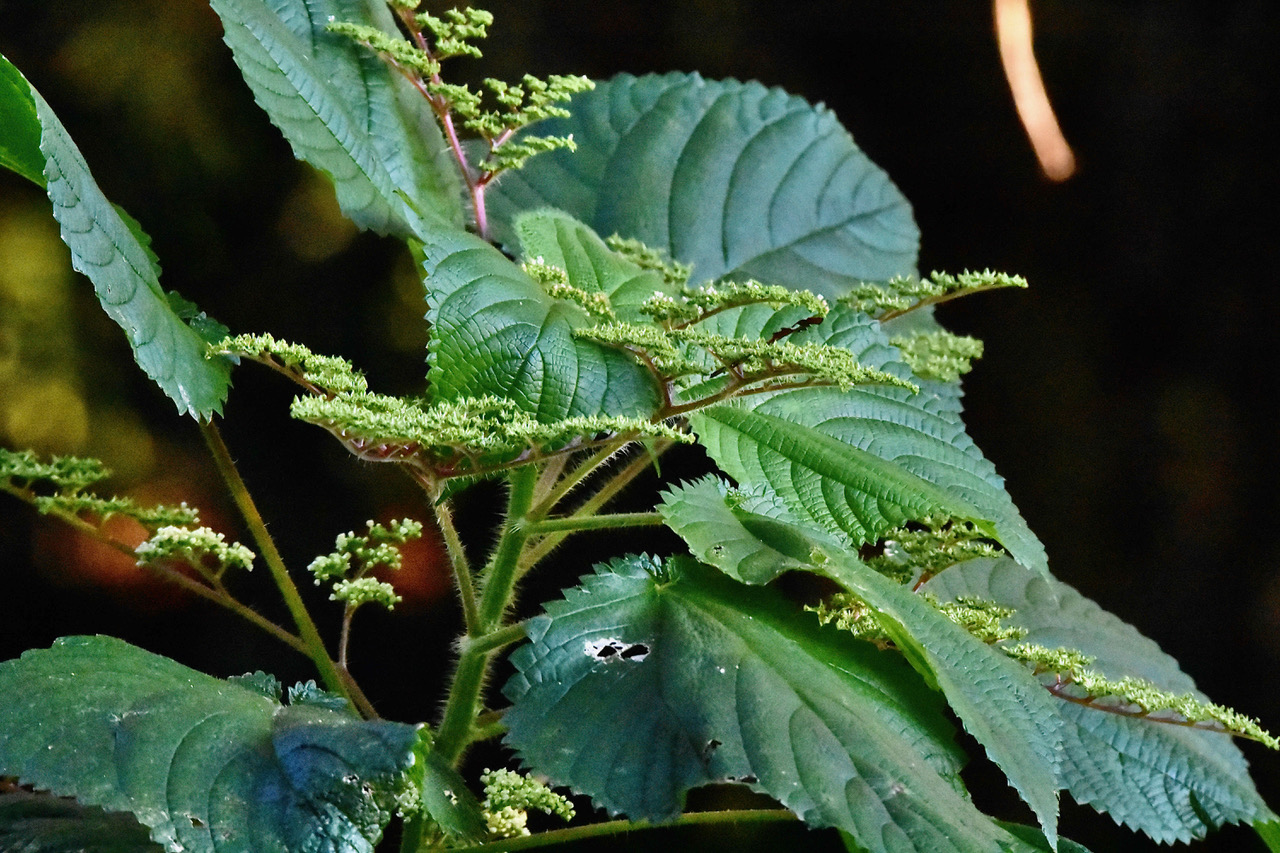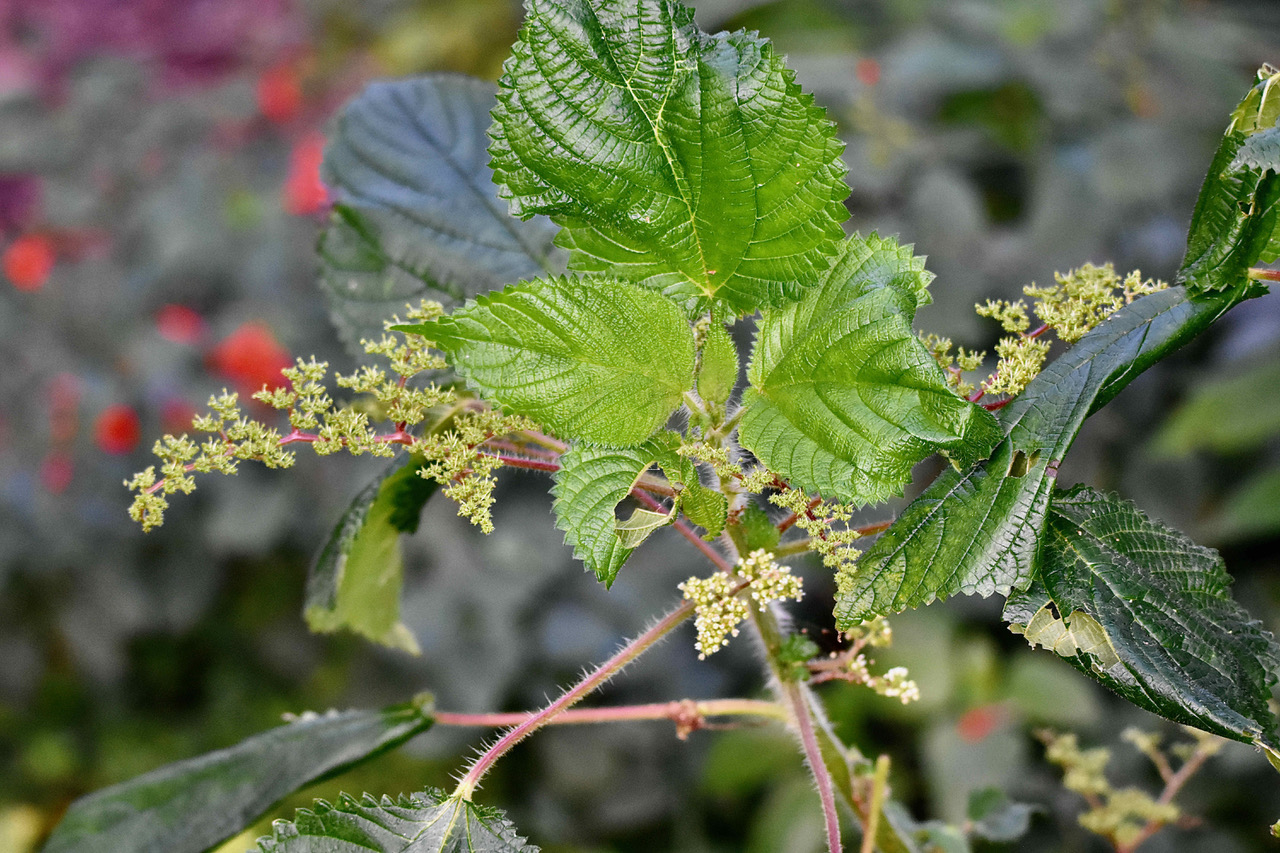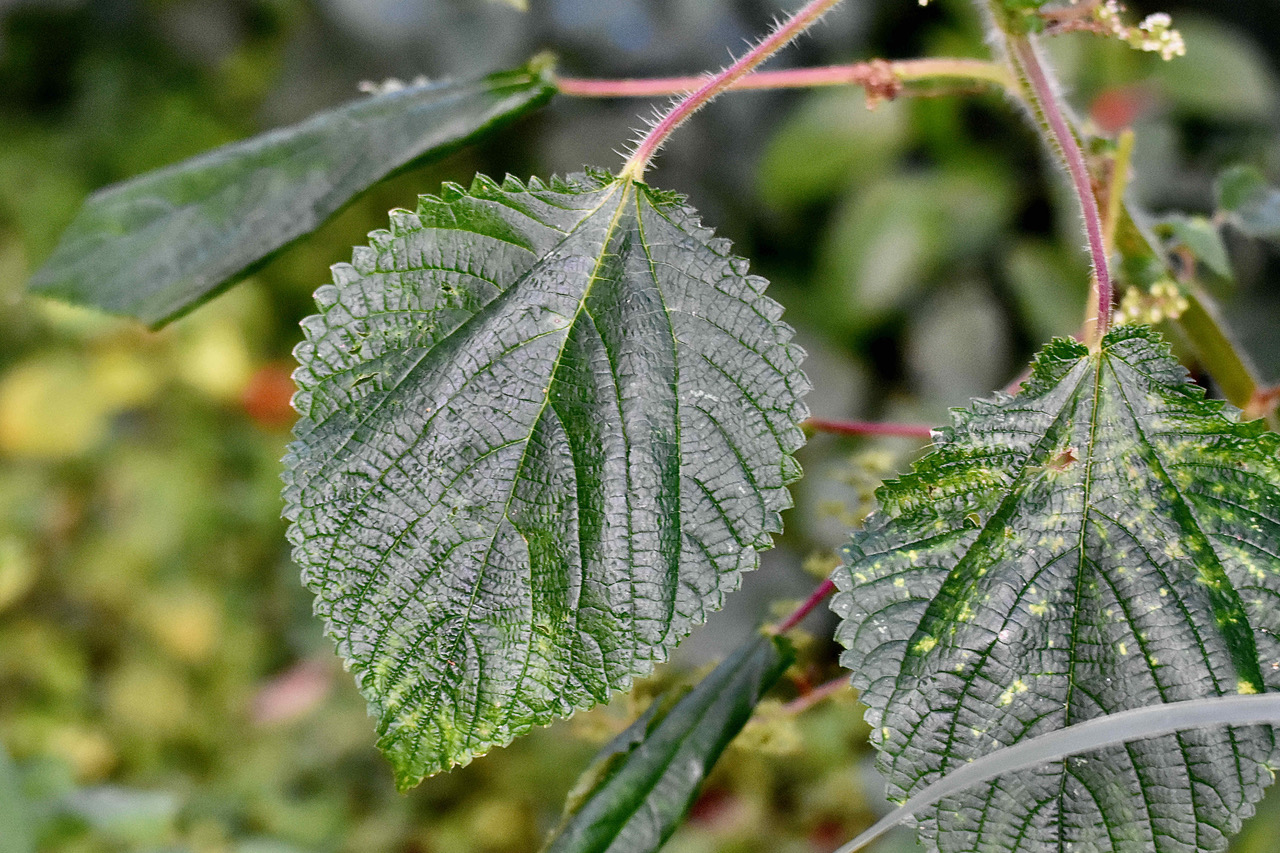
West Indian wood nettle, photographed at Green Cay Nature Center, Boynton Beach, Palm Beach County, in November 2017.
One man’s (or one woman’s) weed might be another’s cure. Or meal.
There is no better example than West Indian wood nettle, Laportea aestuans. It’s little more than a weed here in Florida and in California, the only states in the union where it grows in the wild.
But, in parts of Africa and the Caribbean where it is native, it’s used both as food and medicine, treating myriad ailments. Thing is there is at least some scientific evidence that West Indian wood nettle does have medicinal value.
And that makes it another example why it’s so important to preserve and study plant species and their habitats for the potential benefits they might offer.
West Indian wood nettle (also spelled woodnettle) probably is not native to Florida. It’s found in Palm Beach, Broward, Miami-Dade and Collier counties in South Florida, and a handful of counties in the north and central part of the state. It’s also been documented growing wild in California. It is not considered invasive in either state, though it does have the potential to be an agricultural pest. It also is host to several agricultural menaces, including root knot nematodes.
It is an annual or short-lived perennial growing to about three feet tall. The stems are somewhat woody and covered with two types of hairs, stinging and non-stinging.
We can’t testify from experience, but the sting from the hairs is said to be relatively mild, less than, say that of tread softly, which we can tell you is pretty gosh darn nasty. But like tread softly, the pain goes away after an hour or so.
The leaves are large and oval shaped, serrated along the edges and coming to a sharp point, or apex. They are arranged alternately along the stem.
The flowers are small, yellow-green, growing in clusters on stems that emerge at the leaf axils — the angle where the leaf attaches to the main stem. West Indian wood nettle only reproduces through seeds.
West Indian wood nettle’s native range is a bit of a mystery. It’s definitely native to tropical parts of Africa but it’s also found in warmer places around the globe, including Sumatra, Java, the Caribbean, Mexico and Central America. Most sources say it’s native to the Caribbean.
On the other hand, most sources we’ve read, including the Institute for Regional Conservation, the U.S. Department of Agriculture’s PLANTS Database and Atlas of Florida Plants, say West Indian wood nettle is not a Florida native. But the equally authoritative Flora of North American isn’t totally convinced, saying the plant might be be introduced to Florida and other parts of the western hemisphere where it’s found. The “might” leaves open the possibility that it might also be native.
As we noted above, West Indian wood nettle is important culturally in some places where it grows. It’s eaten as a pot herb. In traditional medicine, it’s used to treat treat lung and stomach problems, including diarrhea and dysentary, as a laxative, for eye problems and as a painkiller.
One study done by scientists at the University of Ibadan in Nigeria found chemicals the plant naturally produces have both antioxidant and antibacterial properties in lab tests equal to standard drugs.
Plants like West Indian wood nettle tend to get more attention from scientists in third world countries than they do in developed countries because of the high cost of western medicines versus what naturally grows around them. But that’s not to say they don’t merit examination from Western scientists for the potential benefits they might offer.
West Indian wood nettle is a member of Urticaceae, the nettle family.


